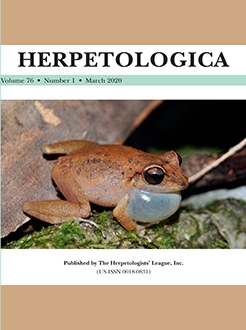Quantifying demographic parameters of freshwater turtle populations at the local scale is necessary in order to understand their natural history and assess their status. To examine whether maritime forest populations display different demographic traits compared to other populations, we studied the freshwater turtle assemblage at Nags Head Woods Ecological Preserve (NHWEP), located on a barrier island of North Carolina. We determined specific demographic traits such as abundance, sex ratio, size distribution, somatic growth, annual survival, and population growth rate of Snapping Turtles (Chelydra serpentina), Yellow-bellied Sliders (Trachemys scripta), Chicken Turtles (Deirochelys reticularia), and Northern Red-bellied Cooters (Pseudemys rubriventris). We determined that most demographic traits of freshwater turtle populations at NHWEP are structured similarly to other populations studied. We found that the population growth rates for three out of the four species analyzed are increasing, indicating expanding populations (with the exception of T. scripta). The annual survivorship rate for D. reticularia was similar to that of many semiaquatic turtles, contradicting previous studies for this species that have reported low annual survival because of reduced longevity. Analyzing multiple demographic traits of different freshwater turtle species within a maritime forest assemblage on a barrier island provides an important baseline on freshwater turtle demographics in unique habitats that are subject to intense environmental stochasticity.
How to translate text using browser tools
4 March 2020
Demographic Traits of Freshwater Turtles in a Maritime Forest Habitat
Ryan J. Hanscom,
Stephen A. Dinkelacker,
Aaron J. McCall,
Adam F. Parlin
ACCESS THE FULL ARTICLE

Herpetologica
Vol. 76 • No. 1
March 2020
Vol. 76 • No. 1
March 2020
assemblage
barrier island
Chelydridae
Emydidae
Population biology
survivorship
Testudines




